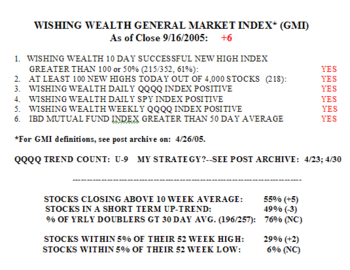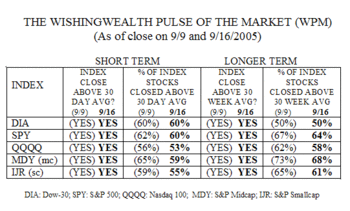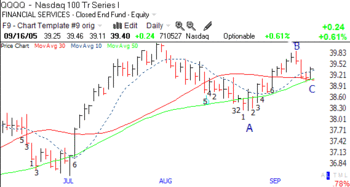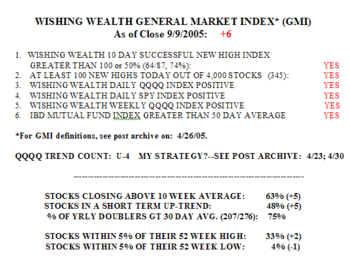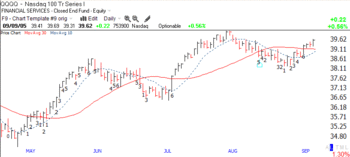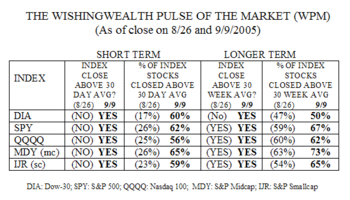What a devastating week for the bulls. The market internals continue to weaken, with only 24% of stocks in my universe of 4,000 in a short term up-trend. The GMI remains at +1, with only the Weekly QQQQ Index still barely positive. There were only 28 new highs on Friday and three times as many new lows. On Friday, only 55% of the Nasdaq 100 stocks, 66% of the S&P 500 and 50% of the Dow 30 stocks advanced, an insignificant bounce up from the week long decline. Friday was the third day in the QQQQ down-trend (D-3). Since its peak on August 2, the QQQQ (Nasdaq 100 ETF) has declined 4.3% and only 34% of its component stocks have advanced, with only 18 stocks (18%) advancing 5% or more. Why fight these odds?
The WPM shows the extraordinary weakness in the short and long term trend measures of five market indexes. All five indexes are below their 30 day averages and only 20-34% of their component stocks are above their 30 day averages. The Dow 30 stocks continue to show the greatest weakness, short and long term. The big industrial 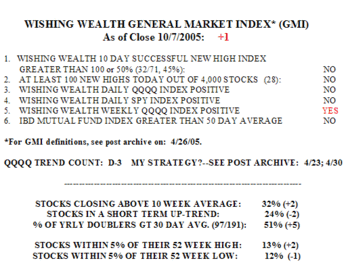 companies are clearly weak. The DIA and SPY ETF’s are both below their 30 week averages, an indication of longer term weakness in trend. Only 30-50% of the component stocks in all five indexes closed above their 30 week averages, suggesting that all of these indexes may find themselves below this key average soon……….
companies are clearly weak. The DIA and SPY ETF’s are both below their 30 week averages, an indication of longer term weakness in trend. Only 30-50% of the component stocks in all five indexes closed above their 30 week averages, suggesting that all of these indexes may find themselves below this key average soon……….
It has taken me 40+ years of trading to understand the folly of fighting the overall market trend. Whether I look at Livermore’s “line of least resistance,” or O’Neil’s “M” in CANSLIM, or Nicolas Darvas’ writings (See Boik’s books at right) I find these gurus all saying that there is a time to be out of the market when it is declining, or to be short. This is a very difficult rule to follow because even in weak markets, I am tempted to go long when I find the “perfect” text book price pattern that brought huge profits in a prior rising market. The critical point to remember is that the same price pattern that works so well in a rising market, is likely to fail in a declining market. Half of the battle for 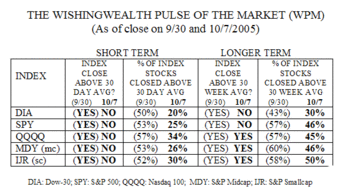 conserving capital is to resist the temptation to buy that unusually strong stock in a bad market. The odds of success are against me. And yet, being in the market is so seductive. (One way I handle such a temptation is to use a very small portion of my portfolio to buy that irresistible stock–just in case I am right.) This topic is so important, I will prepare another post this weekend that will delve into the writings of my favorite guru, Nicolas Darvas, as they apply to the importance of following the market trend.
conserving capital is to resist the temptation to buy that unusually strong stock in a bad market. The odds of success are against me. And yet, being in the market is so seductive. (One way I handle such a temptation is to use a very small portion of my portfolio to buy that irresistible stock–just in case I am right.) This topic is so important, I will prepare another post this weekend that will delve into the writings of my favorite guru, Nicolas Darvas, as they apply to the importance of following the market trend.
